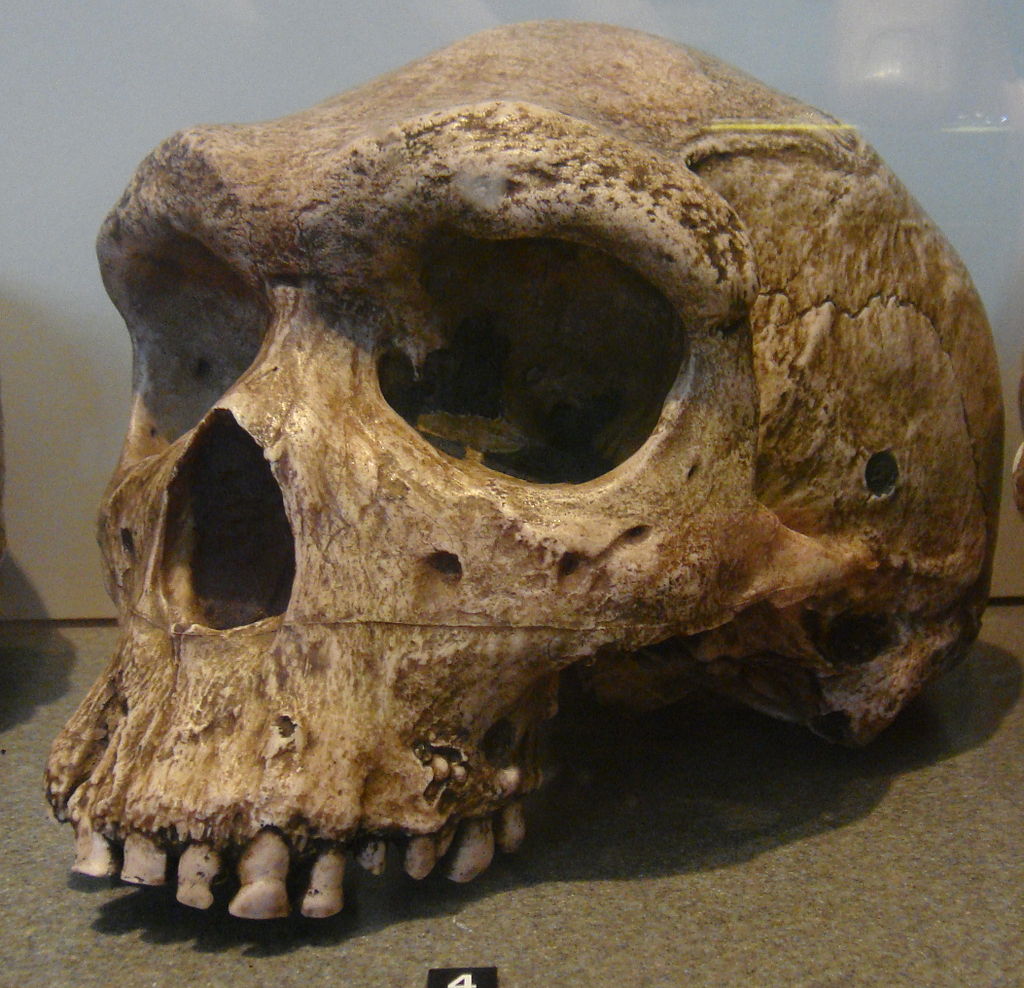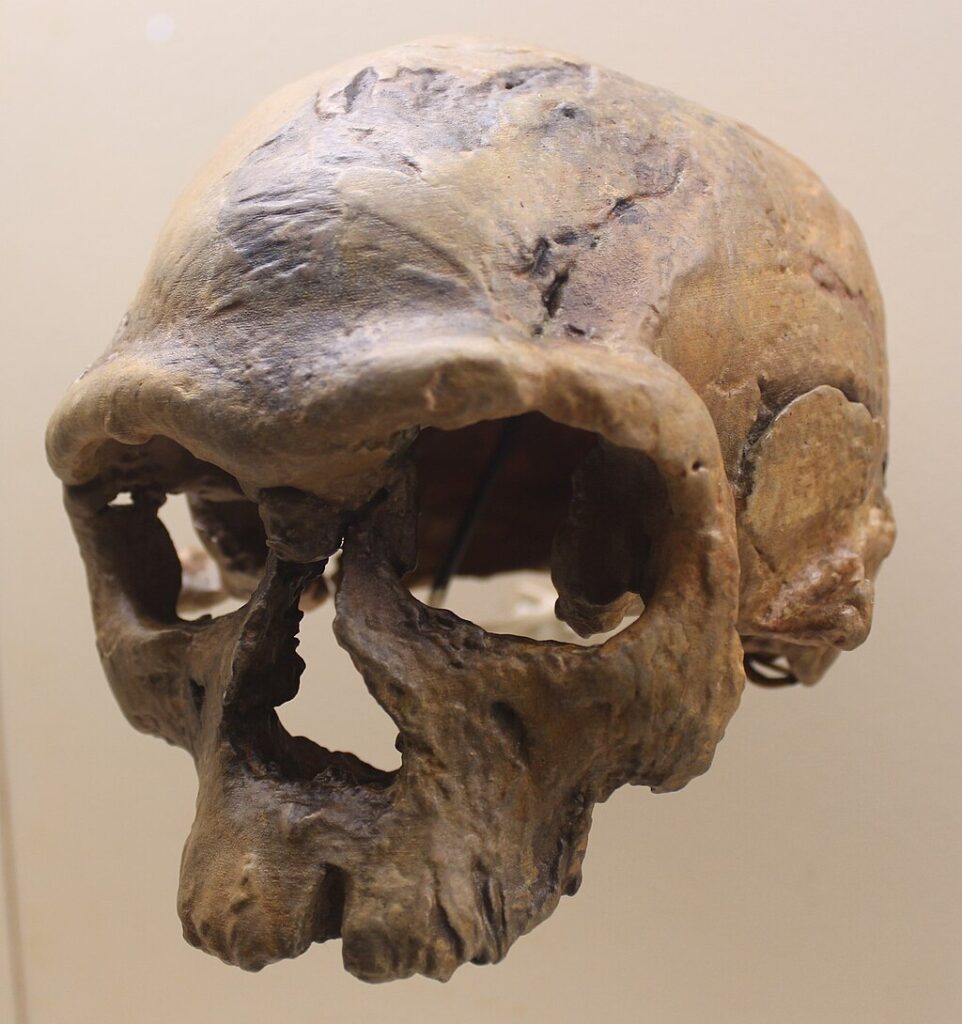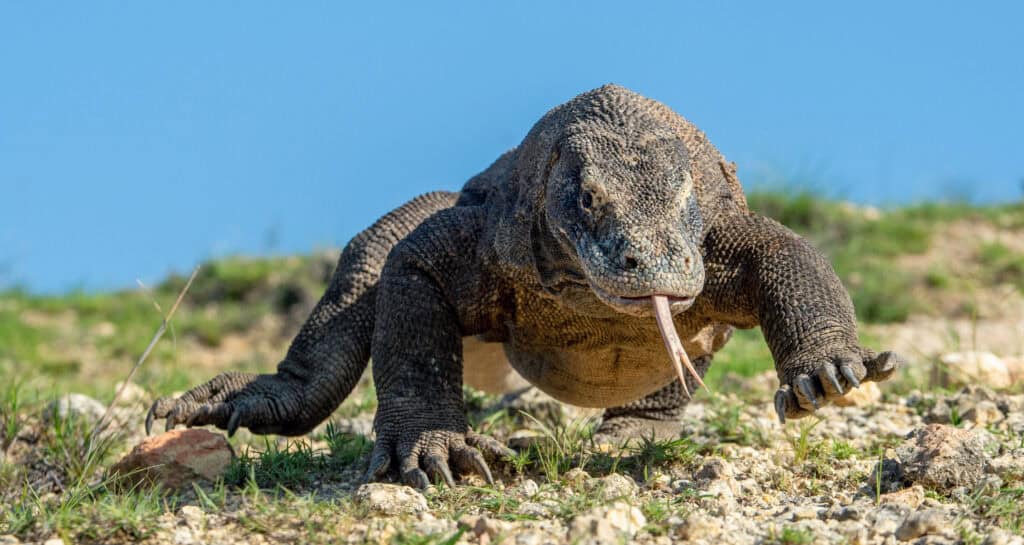The discovery of ancient human skeletons provides fascinating glimpses into our distant past, revealing how our ancestors lived, evolved, and adapted to their environments. These remarkable finds, often dating back hundreds of thousands of years, have reshaped our understanding of human history and migration. Each one tells a unique story of survival, innovation, and cultural development. Below are some of the oldest human skeletons ever discovered, each offering invaluable insights into the origins and diversity of our species.
Red Lady of Paviland

In 1823, the partial skeleton known as the Red Lady of Paviland was discovered in a cave on the Gower Peninsula in Wales. Despite the name, the remains belonged to a young adult male, dated to around 33,000 years ago, making it one of the oldest ceremonial burials in Western Europe. The bones were stained with red ochre, suggesting ritualistic practices, and were found alongside ivory rods and perforated seashells. This discovery provided early evidence of symbolic behavior among Upper Paleolithic humans. Its remains have been pivotal in understanding the spread of modern humans into Europe during the last Ice Age. The site has been revisited multiple times, with each study offering new insights into Paleolithic life.
Balangoda Man

In the 1930s, excavations in the Fa Hien Cave of Sri Lanka uncovered skeletal remains known as Balangoda Man. Dated to approximately 37,000 years ago, these remains are among the oldest evidence of anatomically modern humans in South Asia. The findings included both male and female individuals, providing insights into the physical characteristics of early inhabitants of the region. Associated artifacts, such as stone tools and evidence of hunting, indicate a well-adapted hunter-gatherer lifestyle. The discovery has been crucial in understanding the migration patterns of early humans into the Indian subcontinent. It exhibited robust features, suggesting adaptation to the tropical environment. Ongoing studies aim to uncover further details about their way of life and genetic legacy.
Mungo Man

In 1974, the remains of Mungo Man were discovered near Lake Mungo in New South Wales, Australia. Dated to approximately 42,000 years ago, it is among the oldest human remains found in Australia. The skeleton belonged to an adult male, and evidence suggests he was ritually buried, indicating early cultural practices. The discovery provided significant insights into the migration and settlement patterns of early humans in Australia. Its remains have been central to discussions about the antiquity of human presence on the continent. The site also yielded other human remains and artifacts, painting a picture of a well-established community. Ongoing studies continue to explore the genetic and cultural heritage of Mungo Man and his contemporaries.
Skhul and Qafzeh Skulls

Between 1929 and 1935, excavations in the Skhul and Qafzeh caves in Israel unearthed several human skeletons. These remains, dating from 120,000 to 90,000 years ago, are among the earliest evidence of modern humans outside Africa. The fossils included both male and female individuals, with some showing deliberate burial practices, indicating complex social behaviors. The Skhul and Qafzeh humans exhibited a mix of modern and archaic features, leading to debates about their classification. Their presence in the Levant suggests early migrations of Homo sapiens into Eurasia. The associated artifacts, such as tools and ornaments, reflect advanced cognitive and cultural development. These findings have been instrumental in understanding the interactions between modern humans and other hominin species in the region.
Herto Man

In 1997, anthropologists uncovered the Herto Man fossils in the Middle Awash region of Ethiopia. Dated to between 160,000 and 154,000 years ago, these remains represent some of the earliest anatomically modern humans. The findings included three well-preserved crania, with one belonging to a child, providing insights into early human development. The Herto individuals exhibited a blend of modern and archaic traits, suggesting a transitional phase in human evolution. Associated artifacts, such as stone tools and evidence of butchery, indicate advanced cognitive abilities and social behaviors. The discovery has been crucial in understanding the emergence of modern human morphology and culture. It has significantly contributed to the debate on the “Out of Africa” theory, supporting the idea of a single origin for modern humans.
Omo I

Discovered in 1967 by Richard Leakey’s team in the Omo Kibish Formation of Ethiopia, the Omo I remains are among the earliest known Homo sapiens fossils. Initially dated to around 195,000 years ago, recent studies have revised their age to approximately 233,000 years, underscoring the antiquity of modern humans. The remains include a partial skull and skeletal fragments, exhibiting both modern and archaic anatomical features. Its discovery has been pivotal in tracing the timeline of human evolution in East Africa. The site also contained stone tools, indicating the technological capabilities of early humans. These findings have been instrumental in understanding the early dispersal and adaptation of Homo sapiens. Its fossils continue to be a focal point for studies on human origins and migration patterns.
Florisbad Skull

In 1932, a partial human skull was uncovered at Florisbad in South Africa, estimated to be around 259,000 years old. This fossil represents an early member of Homo sapiens or possibly a transitional form between archaic humans and modern Homo sapiens. It is unique for its mix of archaic and modern features, particularly in the shape of the cranium and face. Found alongside stone tools and animal remains, the site offers insights into the lifestyle and environment of its time. It is significant for bridging gaps in understanding the evolution of early Homo sapiens in southern Africa. Its features suggest adaptation to local climates, contributing to regional diversity in early human populations. The discovery has been instrumental in piecing together the early phases of human evolution on the African continent.
Dali Skull

Discovered in 1978 in Shaanxi Province, China, the Dali Skull is approximately 260,000 years old, representing an enigmatic phase of human evolution. The skull is often associated with archaic Homo sapiens or a regional variant of Homo erectus, showcasing a unique blend of features. It has a large cranial capacity similar to modern humans but retains robust and archaic facial traits. It has sparked debates about regional continuity and the influence of gene flow between archaic and modern human populations. The site where the skull was found also contained stone tools, suggesting cognitive and cultural advancements. This discovery highlights the complexity of human evolution in East Asia and challenges linear models of human development. Ongoing research into it aims to clarify its place in the broader evolutionary timeline.
Kabwe Skull (Broken Hill Man)

In 1921, a fossilized skull was discovered in Kabwe (formerly Broken Hill), Zambia, and is dated to approximately 300,000 years ago. The Kabwe Skull, attributed to Homo heidelbergensis, is one of the best-preserved fossils of this species and offers critical insights into archaic human anatomy. It displays a mix of robust features, such as pronounced brow ridges, and more modern cranial traits. It was found with associated bones and primitive tools, providing evidence of early human behavior and adaptation. This fossil was one of the first ancient human remains discovered in Africa, influencing early interpretations of human ancestry. It is particularly notable for its dental issues, with severe cavities and abscesses, offering a glimpse into the health challenges of its time. Its discovery underscores the diverse evolutionary paths that converged to shape modern humans.
Jebel Irhoud Remains

In 1961, miners in Jebel Irhoud, Morocco, unearthed fossilized human remains that would later revolutionize our understanding of human evolution. Initially misdated, advanced dating techniques in 2017 revealed these fossils to be approximately 300,000 years old, making them the oldest known Homo sapiens remains. The site yielded skulls, mandibles, and stone tools, indicating a complex and developed culture. These findings suggest that early Homo sapiens were dispersed across Africa much earlier than previously believed. The Jebel Irhoud individuals exhibited a mix of archaic and modern features, particularly in cranial morphology. This discovery has prompted a reevaluation of the “cradle of humankind” concept, highlighting a more widespread origin. Ongoing research at the site continues to provide deeper insights into early human behavior and development.
This article originally appeared on Rarest.org.
More from Rarest.org
18 Mysterious Creatures of the World`s Most Isolated Islands

Isolated islands often hide secrets, and some of the world’s most mysterious creatures live in these remote areas. These animals have evolved uniquely, shaped by their environment and isolation. Read More.
21 Strange Geological Formations Found in Uninhabited Lands

The Earth hides some of its most extraordinary formations in uninhabited regions. These remote landscapes are home to geological wonders that seem almost otherworldly. Read More.
16 Elusive Big Cats That Roam the World`s Densest Jungles

The world’s jungles are home to some of the most elusive and mysterious big cats. These majestic creatures often hide in the shadows, making them difficult to spot even in the densest of forests. Read More.
